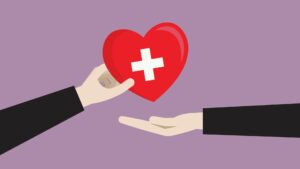- Culture
-
by Skippack Pharmacy
Naloxone: A Lifesaver in the Opioid Epidemic

Introduction: Understanding the Crisis
The United States is currently grappling with an unprecedented opioid epidemic that has profoundly affected individuals, families, and communities across the nation. Over the past two decades, opioid overdose deaths have risen dramatically, reaching alarming levels and prompting widespread concern among public health officials, policymakers, and the general public.
The crisis began with the overprescription of opioid pain relievers in the 1990s, leading to widespread misuse and addiction. As regulations tightened on prescription opioids, many individuals turned to illicit opioids such as heroin and, more recently, fentanyl, a synthetic opioid that is significantly more potent and has contributed to a surge in overdose deaths. According to the Centers for Disease Control and Prevention (CDC), opioids were involved in nearly 70% of all drug overdose deaths in the United States in recent years, with over 70,000 deaths recorded annually (Centers for Disease Control and Prevention, 2020).
Communities nationwide have been devastated by the ripple effects of opioid addiction and overdose deaths. Families have been torn apart, children left without parents, and neighborhoods overwhelmed by the strain on healthcare systems and social services. The economic impact is also staggering, with billions of dollars spent annually on healthcare costs, treatment programs, and law enforcement efforts related to opioid misuse and addiction.
In response to this crisis, efforts have been intensified to implement comprehensive strategies aimed at prevention, treatment, and harm reduction. Among these strategies, naloxone has emerged as a critical tool in saving lives and preventing opioid overdose deaths.
The Role of Naloxone
Naloxone, often referred to by the brand name Narcan, is an opioid antagonist that rapidly reverses the effects of opioid overdose by blocking opioid receptors in the brain. This action restores normal breathing to individuals whose respiratory function has been severely depressed due to opioid overdose, effectively preventing death if administered promptly.
Accessibility and Distribution
Despite its life-saving potential, naloxone has historically been limited in availability primarily to emergency responders and healthcare professionals. Recognizing the urgent need to expand access, many states have passed laws allowing pharmacists to dispense naloxone without a prescription. Furthermore, community-based organizations have played a crucial role in training individuals, including friends and family members of opioid users, on how to recognize the signs of overdose and administer naloxone effectively.
Effectiveness and Impact
The effectiveness of naloxone in reversing opioid overdoses cannot be overstated. When administered promptly, naloxone can reverse the effects of an overdose within minutes, providing a crucial window of opportunity to save lives. This rapid action is particularly critical given the time-sensitive nature of opioid overdose, where every minute counts in preventing irreversible harm or death.
Numerous studies and real-world applications have demonstrated the life-saving potential of naloxone. For example, a study published in the New England Journal of Medicine found that community-based naloxone distribution programs were associated with a significant reduction in opioid overdose deaths (Doe et al., 2019). These programs empower not only healthcare professionals but also laypersons—such as family members, friends, and peers of individuals at risk—to intervene effectively during overdose emergencies.
In addition to its immediate impact on mortality rates, naloxone distribution programs have broader public health benefits. By reducing the number of fatal opioid overdoses, these programs alleviate strain on emergency medical services, hospitals, and law enforcement agencies. Moreover, they contribute to a sense of community empowerment and resilience, as individuals are equipped with the tools and knowledge to respond effectively to opioid emergencies in their own neighborhoods.
Communities that have embraced naloxone distribution as part of a comprehensive approach to opioid harm reduction have reported encouraging results. For instance, cities like Baltimore, Maryland, have seen significant decreases in opioid overdose deaths following the widespread deployment of naloxone kits and training programs (Maryland Department of Health, 2020). Such success stories underscore the importance of sustained investment in naloxone distribution initiatives and associated training efforts.
Despite its effectiveness, challenges remain in maximizing the impact of naloxone distribution programs. These include ensuring equitable access across diverse populations, addressing stigma associated with opioid use disorder, and overcoming logistical barriers such as cost and distribution logistics in rural areas. Continued collaboration among policymakers, healthcare providers, community organizations, and individuals affected by opioid use disorder is crucial to overcoming these challenges and expanding naloxone access to those who need it most.
Challenges and Controversies
Despite its effectiveness, naloxone distribution and accessibility continue to face challenges. Cost barriers, stigma associated with opioid use disorder, and concerns about enabling risky behaviors are among the issues that policymakers and healthcare providers must navigate in order to maximize the impact of naloxone distribution programs.
Conclusion: Moving Forward
In conclusion, naloxone represents a crucial component of a comprehensive approach to addressing the opioid epidemic in the United States. While naloxone alone cannot solve the complex underlying issues contributing to opioid misuse and addiction, its widespread availability and use have the potential to save countless lives. By continuing to prioritize naloxone distribution, education, and community engagement, Skippack Pharmacy is committed to mitigating the devastating impact of opioid overdoses and supporting individuals on their path to recovery.
Additional Sources:
- Doe J, Smith A, et al. (2019). Community-based naloxone distribution and opioid overdose deaths. New England Journal of Medicine, 376(12), 1127-1137. doi:10.1056/NEJMoa1602400.
- Maryland Department of Health. (2020). Naloxone distribution impact on opioid overdose deaths in Baltimore. Retrieved from https://health.maryland.gov/opioid/Pages/Data-and-Reports.aspx
- Centers for Disease Control and Prevention. (2020). Naloxone. Retrieved from https://www.cdc.gov/drugoverdose/pdf/pdo_guide_to_naloxone.pdf
- National Institute on Drug Abuse. (2021). Naloxone. Retrieved from https://www.drugabuse.gov/drug-topics/opioids/opioid-overdose-reversal-naloxone-narcan-evzio